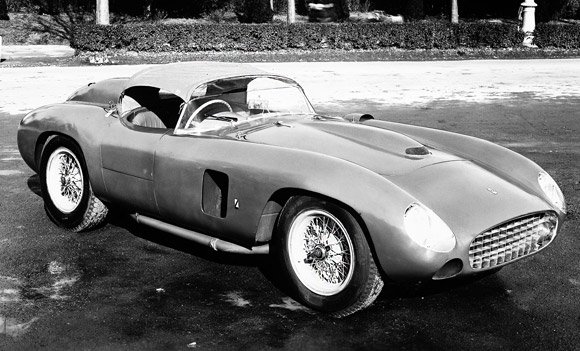Ferrari 290 S
The Ferrari 290 S was indeed the first Ferrari sports car to feature a four overhead camshaft (DOHC) engine. Here’s a discussion about this significant development:
Ferrari’s 290 S was introduced in the early 1950s and marked a technological milestone for Ferrari. It was designed specifically for endurance racing and was developed to compete in events such as the Mille Miglia and the 24 Hours of Le Mans. The car featured a lightweight chassis and a powerful engine, but its most significant innovation was the adoption of a DOHC engine.
The DOHC configuration refers to an engine design that has two camshafts per cylinder bank, allowing for precise control over the opening and closing of intake and exhaust valves. This setup provides several advantages over single overhead camshaft (SOHC) or pushrod engines. By having separate camshafts for intake and exhaust valves, the DOHC design enables improved airflow, higher engine speeds, and increased power output.
In the case of the Ferrari 290 S, its DOHC engine was a V12, meaning it had twelve cylinders arranged in a V-shaped configuration. The engine’s dual overhead camshafts operated the intake and exhaust valves of each cylinder bank independently, maximizing performance potential. This design allowed for efficient fuel combustion, higher RPM limits, and increased horsepower compared to previous Ferrari models.
By adopting the DOHC technology, Ferrari significantly improved the engine’s breathing capacity, resulting in increased power and torque. The 290 S’s engine produced around 320 to 360 horsepower, depending on the specific model and tuning. This impressive output, combined with the car’s lightweight construction and aerodynamic design, made it a formidable competitor on the racetrack.
The success of the Ferrari 290 S in endurance racing solidified the DOHC engine’s reputation as a technological breakthrough for Ferrari and set a precedent for future Ferrari sports cars. Subsequent models, such as the legendary Testa Rossa and the 250 series, also featured DOHC engines, further establishing Ferrari’s expertise in this field.
In conclusion, the Ferrari 290 S was a pioneering sports car that introduced the use of a DOHC engine to Ferrari’s lineup. This innovation brought improved performance, higher RPM limits, and increased power output, setting the stage for Ferrari’s subsequent racing successes and establishing the brand as a leader in high-performance automotive engineering.
Ferrari 290 S Technical Specifications
Year of Manufacture – 1957
| ENGINE | ||
| type | front, longitudinal 60° V12 | |
| bore/stroke | 73 x 69.5 mm | |
| unitary displacement | 290.88 cc | |
| total displacement | 3490.61 cc | |
| compression ratio | 9 : 1 | |
| maximum power | 243 kW (330 hp) at 8000 rpm | |
| power per litre | 95 hp/l | |
| maximum torque | – | |
| valve actuation | twin overhead camshaft per bank, two valves per cylinder | |
| fuel feed | six Weber 42 DCN carburettors | |
| ignition | twin spark plugs per cylinder, four coils | |
| lubrication | dry sump | |
| clutch | multi-plate | |
| CHASSIS | ||
| frame | tubular steel | |
| front suspension | independent, unequal-length wishbones, coils springs, hydraulic shock absorbers | |
| rear suspension | de Dion, twin radius arms, transverse leaf spring, hydraulic shock absorbers | |
| brakes | drums | |
| transmission | 4-speed + reverse | |
| steering | worm and sector | |
| fuel tank | – | |
| front tyres | 6.00 x 16 | |
| rear tyres | 7.00 x 16 | |
| BODYWORK | ||
| type | two-seater spider | |
| length | – | |
| width | – | |
| height | – | |
| wheelbase | 2350 mm | |
| front track | 1296 mm | |
| rear track | 1310 mm | |
| weight | – | |
| PERFORMANCE | ||
| top speed | – | |
| acceleration 0-100 km/h | – | |
| 0-400 m | – | |
| 0-1000 m | – | |

